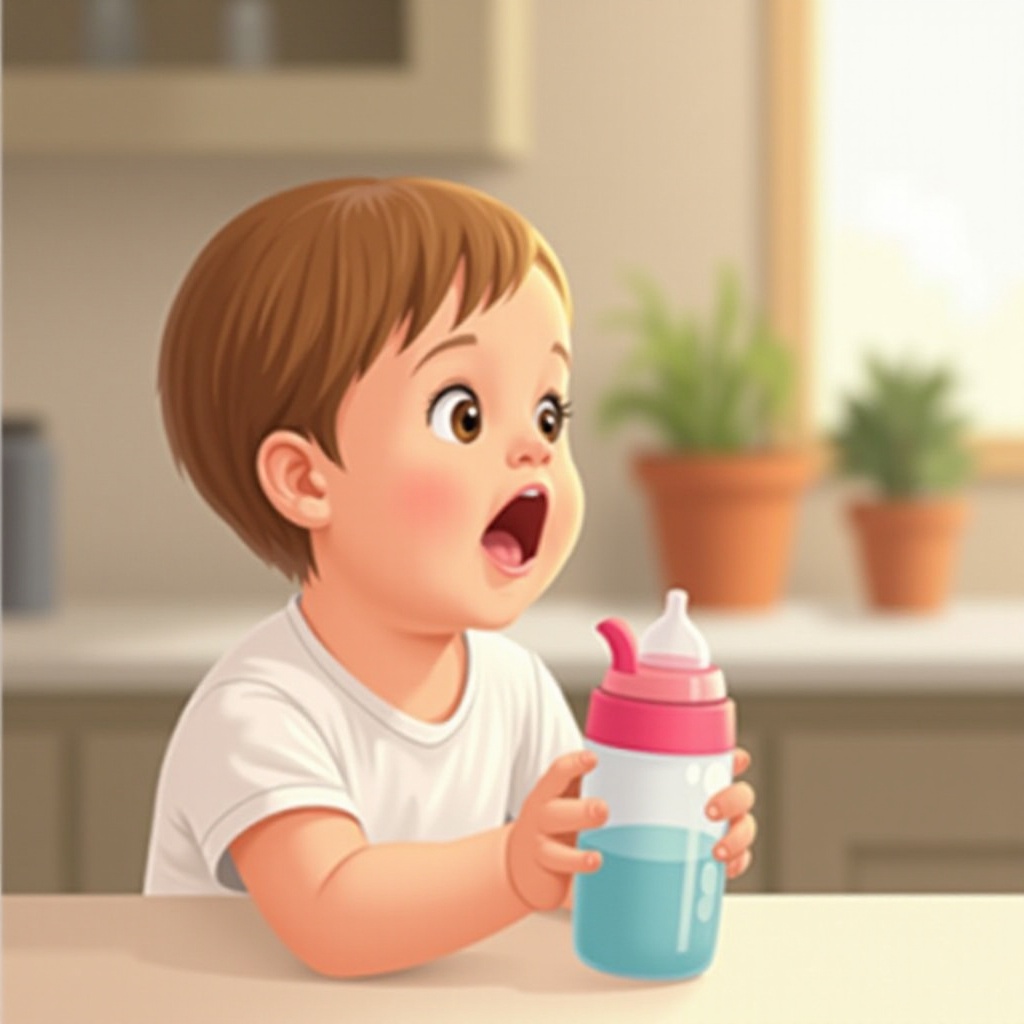Helping your child transition from a bottle to a sippy cup is a critical step in nurturing their independent drinking abilities. Not only does this change support their independence, but it also promotes better dental health and oral skill development. By understanding the right timing and employing a structured approach, you can facilitate a smoother and more effective transition.
Introduction
Parents are often uncertain about when and how to initiate the shift from bottles to sippy cups for their children. Although each child’s readiness may vary, many begin this transition between 6 months and 1 year of age. Early introduction helps acclimate your child to the change. The key here is a gradual shift, providing the necessary patience and comfort, thus making the new drinking method seem less daunting. As you prepare, it’s essential to understand the process to make this transition seamless.

Understanding the Transition Process
Understanding how your child will adapt to using sippy cups is crucial. The transition holds several benefits:
-
Why Transitioning is Important: Moving from a bottle to a sippy cup reduces the risk of tooth decay and encourages hand-eye coordination development. Extended bottle use can lead to dental issues, including cavities. Sippy cups are instrumental in honing motor skills required for drinking from an open cup in the future.
-
Identifying the Right Time to Begin: Observe developmental signs such as interest in solid foods, ability to sit up with limited support, and increased aptitude for grabbing objects. Trust your parental instincts and watch for cues on your child’s readiness.
With these foundations in mind, the next logical step is selecting a sippy cup that best suits your child’s needs and preferences.
Choosing the Right Sippy Cup
Choosing an appropriate sippy cup plays a pivotal role in the transition. It can affect how smoothly the process unfolds. Here’s how to make the best choice:
-
Types of Sippy Cups: Pros and Cons: Two main types exist—hard spout cups and soft spout cups. Hard spout variants are durable, making them suitable for teething toddlers, but they’re harder for novices. Soft spout cups, resembling bottle nipples, are gentler on the gums, rendering them an ideal starting choice.
-
Key Features to Look for in a Sippy Cup: Seek spill-proof cups to reduce messes and ensure the cup features handles for an easy grip. Prioritize materials such as BPA-free plastic, and consider silicone or stainless steel for safety and durability. Opt for cups with simple-to-clean components for hygiene maintenance.
Armed with the right cup selection knowledge, you’re now ready to implement efficient transition techniques that align with your child’s learning pace and style.
Effective Transition Techniques
Crafting a foolproof transition strategy involves patience and well-thought-out techniques. Here’s a guide:
-
Gradual Phasing Out of Bottles: Begin by replacing one routine bottle feeding with a sippy cup session daily. Aim for mid-morning or afternoon substitutions to introduce the cup without impeding sleep.
-
Introducing the Sippy Cup: Early Exposure: Encourage your child to play with the cup before actual use. Let them handle it at mealtimes with small water amounts, fostering comfort through familiarity.
-
Developing a Consistent Routine: Integrate the sippy cup into regular feeding times. Consistent use solidifies its presence, easing the transition process.
As your child starts using the cup, knowing how to inspire continued use and acceptance will sustain progress.

Motivating Your Child to Use a Sippy Cup
Motivating your child to embrace their sippy cup is vital. Here are useful tips:
-
Making the Experience Fun: Select sippy cups featuring colors or characters your child enjoys. Turn the transition into a game by introducing small challenges or rewards when the cup is used.
-
Positive Reinforcement and Rewards: Offer praise for efforts toward using the sippy cup. Celebrate small wins and provide rewards, such as stickers, to encourage progress.
Even with a well-executed plan, some challenges may surface. Tackling these effectively is crucial.

Troubleshooting Common Challenges
Children will react differently to new transitions. While resistance is common, staying calm and patiently addressing it is vital.
-
Overcoming Reluctance: Patience Strategies: Reintroduce the sippy cup consistently despite initial resistance. Model cup usage and commend your child for small achievements.
-
Handling Emotional Resistance: Comfort Tips: Provide warmth and comfort if your child is agitated. Retain familiar routines and offer distractions or comforting activities to nullify negative perceptions.
Keeping sippy cups clean is as vital as any other change you impose. Hygiene practices ensure your child’s health as they adapt to this alternative.
Ensuring Proper Hygiene for Sippy Cups
To prevent bacteria and mold, cleaning practices need to be stringent.
- Thoroughly wash each part after use.
- Use brushes for intricate component cleaning.
- Sterilizing or opting for dishwasher-safe cups ensures hygienic assurance.
Conclusion
Successfully transitioning from a bottle to a sippy cup marks an important milestone in development. By choosing the right cup, effectively shifting routines, and encouraging your child’s embrace of this shift, you foster a positive mindset for future transitions. Above all, patience and persistent support are key elements during this rewarding journey.
Frequently Asked Questions
What age should my child start using a sippy cup?
Most children are ready to start using a sippy cup around 6 to 12 months. It’s vital to observe your child’s readiness and adapt the timing as needed.
What if my child refuses to use the sippy cup?
If your child refuses, continue offering it without pressure. try different styles or materials, and demonstrate using the cup to stir curiosity.
How can I ensure the sippy cup is cleaned properly?
Disassemble the cup after each use and wash all parts with warm soapy water. A cleaning brush can help reach any tight spots within the spout or crevices.
